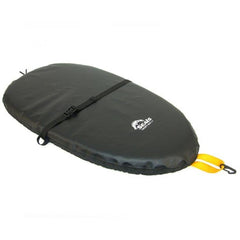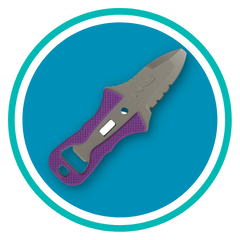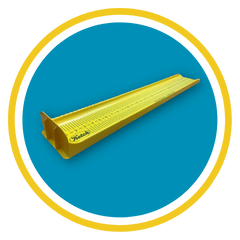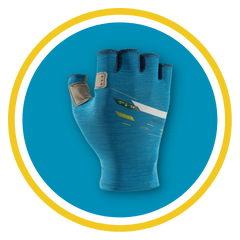Winter Maintenance
Brrr it’s cold outside! If snow and ice are keeping you indoors, but you’re daydreaming about long, sunny days on the river, take some time to maintain and repair your boats for the upcoming season. Here’s a quick boat maintenance checklist you can start in the garage on a snow day.
Clean
Check for new dents caused by storage and kick out any critters that may have taken up residence in your boats. If you didn’t clean your boat before the winter, wipe it down with a damp cloth or brave the cold long enough to hose it off. A mild dish soap mix works great for stubborn dirt.
Remember that sit-inside kayaks can make very attractive homes for your shed’s local fauna, so consider a cockpit cover to seal your boat against unwanted guests.

Test
If you see any gouges or cracks that worry you, or you had a leak last time you used the boat, you can go ahead and perform a fill test to confirm. Set the boat up on sawhorses or cinder blocks and fill it with a couple inches of water. Wait and watch to see if water drips out anywhere. If you see a drip, don’t panic! Leaks are usually pretty easy to repair.
Tighten
The most common cause of leaks is loosening hardware. Just like the rest of us, boats aren’t immune to aging. Hardware loosens up, hatch covers don’t fit as tightly, and small leaks may develop. If you suspect you have a leak, first try gently tightening all the through-hull bolts. Make sure washers are snug down to the plastic. Then, check any hatch covers or gaskets for cracking rubber or loose seals. If you have a common size rubber hatch seal, measure the hatch and look for a replacement at Top Kayaker.

A common replacement rubber hatch cover
Repair
If your leak is caused by an actual crack, give us a call and we can look over the damage. We offer plastic welding, fiberglass patches, and other repair services in our Farmville shop. And if your canoe is worn down at the ends, consider installing skid plates to significantly extend its lifespan.
Another common type of damage is denting, or oil canning. This is most commonly caused by improper storage or transport, when the bottom of the boat comes in contact with a hard surface for a long period of time and the hull deforms. Don’t panic if your boat has some oil canning. Simply heat the area and consider placing weight on the inside of the boat, and the dent should pop out over time. A sunny, hot day is the ideal way to do this, but a heat gun used carefully works as well.

Replace
Besides the hull of the boat, kayaks and canoes have any number of component parts that can wear out and show their age. Many of these parts can be replaced very easily, although some are tricky to find.
If you need common parts, such as carry handles, foot pegs, or various nuts and bolts, we might have some on hand for you. If the part you need is more specific, try searching Top Kayaker or reaching out to the manufacturer.

Tune Up
If your kayak has a pedal or motor drive, take some time to perform recommended maintenance. Here are a few great resources for common pedal drive systems:
https://nativewatercraft.com/pages/propel-maintenance For Native Watercraft, LiquidLogic, Bonafide, and Hurricane drives
https://www.youtube.com/watch?v=CA2tVDsNBG0 For Hobie MirageDrive GT and 180
https://www.youtube.com/watch?v=axvk4Fk539M For Jackson FlexDrive
https://www.oldtowncanoe.com/blog/article/maintenance-tips-pedal-kayaks For Old Town PDL drives
https://www.youtube.com/watch?v=OROYxcJfDtE For Wilderness Systems and Perception drives
https://www.youtube.com/playlist?list=PLsECXXADX10KO9MC6XwBUKNsPhUodJxQJ For Pelican HyDryve
You can order parts like grease kits, props, shear pins, and fins directly from the manufacturer, from online sources like Amazon or TopKayaker, or through your dealer.
Keep Out
We know you’re handy and love fixing things, but many of the repairs we get in our shop are caused by owners trying to service parts that weren't meant to be user-serviceable. If you’re working with pedal drives, steering systems, skegs, or motors, please look up maintenance instructions from the manufacturer before you start working. Reading the directions is NOT cheating. Remember that if you service these parts or use non-recommended materials, you may void any applicable warranties.
Rudders are one of the most common places for these mistakes. As a general rule, we recommend not messing with your rudder system at all except for maintenance explicitly advised by the manufacturer. Rudder repairs are complicated because each one works a different way and the systems are often difficult to access. The good news is that our expert technicians can take care of these systems for you.
Final Notes
Many problems with kayaks and canoes can be easily prevented with regular maintenance. If your boat is showing signs of its age, don’t fret—it’s probably got a long life still ahead of it with a little TLC. You can do most of this yourself, but if a repair is beyond your comfort level give us a call and we’ll see if we can't fix it right up for you.










































